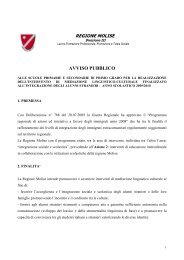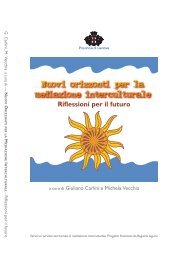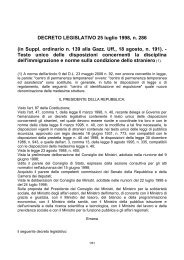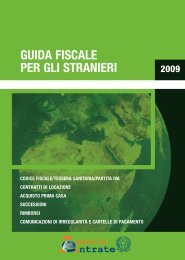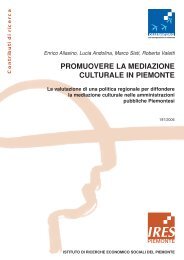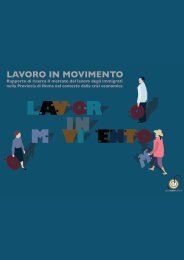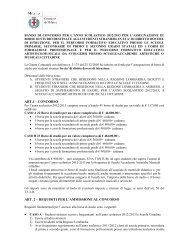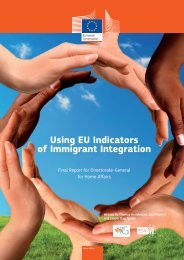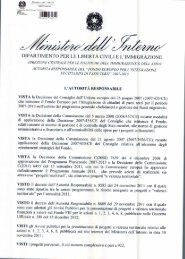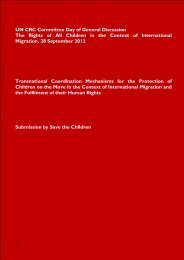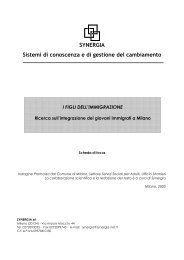Combating anti-Roma stereotypes and prejudices through media
Combating anti-Roma stereotypes and prejudices through media
Combating anti-Roma stereotypes and prejudices through media
- No tags were found...
You also want an ePaper? Increase the reach of your titles
YUMPU automatically turns print PDFs into web optimized ePapers that Google loves.
40. The RFOM should consider facilitating training seminars for <strong>Roma</strong> journalists.41. The ODIHR-CPRSI <strong>and</strong> the RFOM will organize round tables with journalists on the image that<strong>Roma</strong> <strong>and</strong> Sinti communities have in society.42. The HCNM will continue to elaborate <strong>and</strong> disseminate guidelines for policy-makers on the use ofthe State broadcast <strong>media</strong> in multicultural communities, aimed, inter alia, at encouragingsupport for minority broadcasters, including <strong>Roma</strong> <strong>and</strong> Sinti broadcasters, <strong>and</strong> improving theiraccess to the <strong>media</strong>.Council of Europe Joint Programmes <strong>and</strong> Initiatives for ROMAThe Council of Europe's main objective is to encourage its members to take a comprehensive approach to<strong>Roma</strong> issues. This involves three main priorities - protecting minorities, combating racism, <strong>anti</strong>-Ziganism <strong>and</strong>intolerance <strong>and</strong> preventing social exclusion. One of the fundamental principles guiding this approach isparticipation of the communities concerned, <strong>through</strong> <strong>Roma</strong> <strong>and</strong> Travellers representatives <strong>and</strong> associations.Since 1995, the Committee of Experts on <strong>Roma</strong> <strong>and</strong> Travellers (MG-S-ROM) has been tasked with advisingmember states <strong>and</strong> encouraging international authorities to take action where needed. Its role complementsthat of the Secretary General's Co-ordinator of Activities concerning <strong>Roma</strong>, responsible for promoting cooperationwith other relevant international organisations <strong>and</strong> developing working relations with <strong>Roma</strong> <strong>and</strong>Travellers issues organisations.A Joint CoE/EC programme was launched for 2008/2009 entitled ‘Enhancing the domestic capacity to devise,implement <strong>and</strong> monitor National Action Plans for <strong>Roma</strong>, <strong>and</strong> countering negative stereotyping faced by<strong>Roma</strong> people’. Another example of joint CoE/EC programmes on behalf of <strong>Roma</strong> people is the Dosta!awareness campaign 16 , a collaborative effort with several NGOs to promote a positive image of <strong>Roma</strong>citizens to combat common <strong>stereotypes</strong> <strong>and</strong> <strong>prejudices</strong> in South-Eastern countries, such as Moldova <strong>and</strong>Ukraine. Moreover, training activities tailored to <strong>Roma</strong>/non <strong>Roma</strong> <strong>and</strong> journalists are being implementedacross Europe in order to make them ‘ambassadors of communication’, raise awareness <strong>and</strong> spreadknowledge: bringing them together is a key factor to overcome general negative perception.The objective of the Route of <strong>Roma</strong> Culture <strong>and</strong> Heritage is to increase the knowledge of people in Europeabout <strong>Roma</strong> history, culture, values <strong>and</strong> lifestyle, to encourage the contribution of <strong>Roma</strong> to Europe’s culturallife <strong>and</strong> diversity <strong>and</strong> ultimately contribute to giving a positive value to an image of <strong>Roma</strong> which are, moreoften than not, perceived in a negative <strong>and</strong> stereotyped way. To achieve this, the Cultural Route will firstdevelop as a network of organisations (associations, museums, documentation <strong>and</strong> cultural centres, art <strong>and</strong>education institutions, festivals, etc) which work together towards developing a common set of activities. Asa second stage, the Route will evolve as a series of tourist itineraries across different cities <strong>and</strong> territories ofEurope, which would allow visitors to gain a more thorough underst<strong>and</strong>ing of <strong>Roma</strong> culture. 1716 http://www.dosta.org/17 http://www.coe.int/t/dg4/cultureheritage/culture/routes/roma_EN.asp?19



